You all must have witnessed that technology is changing swiftly at a breakneck speed. Businesses today are shattering every industry imaginable, with brilliant entrepreneurs constantly emerging with innovative ideas to develop fantastic digital products and make people’s lives easier.
In this modern age where countless mobile applications, web applications, digital products, and software tools simplify daily chores, having your product or app idea in one go can be a tough challenge. Here, MVP or Minimum Viable Product comes into the picture.
So, here we start the article by imagining your dream idea converting into reality. Now, you are just one step away from bringing your vision to life with the MVP development. Isn’t it exciting?
Before we go ahead with the necessity, benefits, and process of MVP development, let’s get into the nitty-gritty of what we’re referring to.
Introducing MVP
An MVP is not a wireframe or an early proof of concept, or a technique. Instead, it’s a minimal product release that satisfies customer’s demands.
Simply saying, Your MVP is a product without extras. It holds the limited, or you can say, minimum, amount of features that provide you with the core functionality of your product.
You can imagine pizza without cheese and toppings are your MVP product, whereas pizza with cheese burst, toppings of different vegetables on it is your final product.
You can delight your customers with MVP to validate the app and move forward with the building of the final product. You must start with an MVP first to get market validation for your idea. An MVP helps you scale and also supercharge your digital product.
MVP follows a build-measure-learn approach, which allows you to release a product, understand what users demand, and build future versions of your product that better serve your targeted customers.
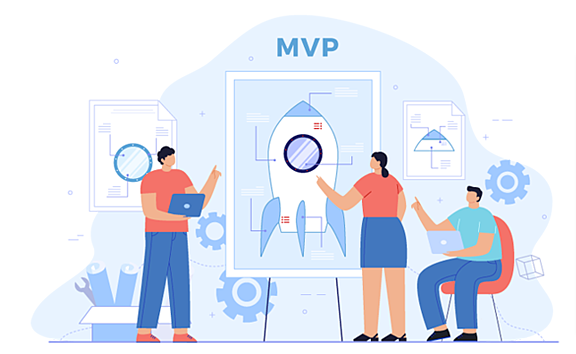
Why MVP Is A Need For Most Of The Businesses Today?
Are you feeling confused as to whether you should start with an MVP or launch the entire product?
These are the reasons why Facebook, Groupon, and other million-dollar companies launched their MVP first.
1. Analyze The Current Market Trend
Before any product launch, it’s essential to understand that if the SaaS product would work in the market or not. It’s all about testing the market demand to ensure whether the MVP idea would succeed or not. Hence, an MVP is the one-stop solution that can help you test the same and continue with your product idea. MVP performance can then be measured and pivoted.
2. Entice Early Adopters
MVP product is the beta version developed to entice early adopters.
Each MVP product developed has some early customers on whom the beta version of a product is tested. No additional features should be there in a minimal viable product.
With MVP development, you can easily engage and entice your early users and this is one of the reasons that many of startups prefer MVP development today.
3. Faster Product Launch
The never-ending and unstoppable race of the emerging startups and enterprises to deliver something faster and innovative than their rivals is a popular practice right now. MVP development helps you reach your target customers at a low time and cost. A faster product launch gets your product tested in the initial phase and with faster feedbacks.
Read also: Minimum Viable Product: The Benefits of MVP Development
4. Validate Your Market
Performing market validation is extremely important when launching your product. You need to verify assumptions to make your product work well during market research. MVP helps you get the correct validation check and real market insights.
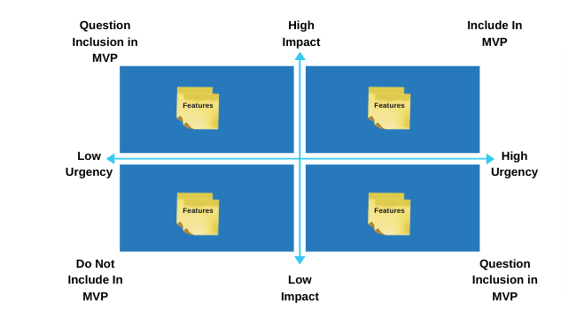
5. Apply Risk Mitigation Strategies
As we know, there are many risks associated with MVP development. You can invest a small share in MVP development and know if your product idea would work. The MVP process helps you mitigate the risks and avoid any significant failures.
Business Goals You Can Achieve With MVP
Building an MVP for your product achieves five goals:
1. Prove The Viability Of Your Idea
“Success is not delivering a feature; success is learning how to solve the customer’s problem.” Eric Ries, The Lean Startup
A minimum viable product defines what you’re offering and what your users want. It enables you to prove the viability of your hypothesis before creating a full-fledged website. Launching an MVP permits you to figure out how strong users desire to find, install, and use your product — and to share positive reviews about it.
2. Increases The Learning Curve Of Teams
Launching your product in the market in its MVP version gives your development team myriad opportunities to learn your product in-depth. Utilize customer responses received in improving and enhancing the upcoming product releases.
The MVP development is an iterative process that provides your in-house team with a platform so that you can add more value to your MVP product.
Read also: Minimum Viable Product: Understanding The Importance Of MVP In 2021
3. Test Market Demands
Before launching a product, it is crucial to understand whether the product would work in the market. MVP helps to test the market demand at the initial phase to ensure its outstanding success.
Hence, an MVP helps you upgrade or completely pivot based on the findings by measuring the MVP performance. It ultimately help businesses to get quick user responses for the product.
4. Lower Development Time And Costs
Your MVP should primarily focus on a simple design for your app and solve your target audience’s problem. Developing a digital product that too in a limited cost is one of the best thing MVP does. Starting with the basic version is a safest approach to development in terms of cost. Here you can start investing with less amount and keep the bigger part for future purpose.
Read also: MVP Development 101: Step-By-Step Guide To Build Minimum Viable Product
Step-By-Step Process Of MVP Development
To get a faster and successful product launch, you need to follow few steps. However, the initial research, imagination, market analysis, customer study, etc., take up your maximum time. Some crucial steps go into the building of an MVP for enterprises. Let’s check them out.
1. Market Research
Analyzing and researching the market is the first and foremost step in building an MVP. Almost 42% of startups fail because their app idea has no market need. There is a high need for every enterprise to perform in-depth market research before initiating the development or investing resources.
Here you get the validation for your idea through an in-depth analysis of the market. Go through research studies, videos/blogs, conduct surveys, etc., to understand user needs for the product/service you are building.
2. Brainstorming Around the Idea
After in-depth market research, it’s time to validate your product idea. While you have performed the market research and know that there could be a market need for your startup MVP app, the next is to validate the idea. It is where you think about the product USP and analyzes what would make it stand out.
Here, you also need to analyze the solutions to ensure you are on the right track. You will get assurance and validity around your product idea.
Also Read: A Complete Guide To Outsourcing Product Development
3. Outline The User Flow
In this step, you will have to map the perspective and create the journey. You can visualize the product from the user’s perspective.
Let’s this example clear all your doubts. Suppose you are building an app like Uber. The initial MVP would have a user flow with steps including entering the destination name, finding the ride, booking the ride, making payment.
It will help you determine the way you are going to build an MVP product.

4. Define & Prioritize MVP Features
Once the user flow has been established, you need to start defining and prioritizing the features of the first version. Before starting with product development, you need to start by listing all the features that would go in each step. You will end up with a more extensive list of features that will be included in the product.
However, this list can be exhaustive. You need not put in all the elements in the very first version. It is where prioritizing the features come in. You need to start by categorizing the features as core features and add-on features. You can follow the process shown in the image below to begin prioritizing.
5. MVP Development
This is where the complete development process starts. There are different approaches that an enterprise can take to build its minimum viable product. It depends on the cost availability, technology requirements, and in-house expertise, whether enterprises can choose from the three approaches to MVP development. These are:
- Hire remote developers/ teams
- Build in-house MVP app development team
- Outsource MVP development to a mobile app development company
Read also: Why Startups need MVPs for Mobile App Development? A Roadmap to Success
6. MVP Launch
The next important step for building an MVP is the launch. It is crucial to analyze the platform where you plan to launch.
You need to ensure that it need not be available for all platforms like iOS, Android, iPad, etc. So, you need to ensure which platform you have developed your app MVP for and prepare for the launch.
Create the marketing copies for promoting the MVP launch. Also, it is targeted at the buyer personas of the early adopters.
7. Measure, Learn & Implement
The post-launch period is very crucial for any MVP. You build the MVP, measure the success, learn from the feedback received, and implement it in the following versions or updates. We have listed down some of the ways to track MVP performance.
Feedback: Here, you collect feedback and responses from the early adopters.
Engagement: Check the engagement level, time spent, the path they take, clicks they make, etc., to know how engaged they were with the MVP app.
Sign-ups: These are the number of people who sign up for your app via the platform you have launched.
Active Users: Check for the daily active users and monthly active users to know how many people actively use your app.
Churn Rate: This is a significant measure to check the number of people still using the app MVP and uninstalled people.
Tech Stack That Empowers Your MVP
Assisting enterprises in developing their MVPs with the right tech stack is quite a daunting task. Choosing the appropriate programming language and frameworks for an MVP brings up its advantages & disadvantages.
Here comes the right tech stack for your MVP:
1. Angular
Angular is a popular open-source JavaScript framework released in 2010. It is the Typescript designed for developing web applications. The angular framework comes under the MEAN tech stack.
It provides a wide range of code editors has a steeper learning curve with detailed documentation.
The framework leverage features to create impeccable and pleasing designs for the front end. Angular ensures the high performance of single-page applications across all platforms. It easily and quickly performs the implementation of product analysis and development tasks of complex nature.
2. Python
Python is an interpreted language with dynamic typing. It emphasizes code readability. It is to implement both small and large-scale applications. But, it performs a bit slow when it comes to run time performance, but this issue doesn’t make any difference for startup applications.
The Python programming language acts as a leading tool for implementing machine learning algorithms, Chatbots, image recognition software, and many more. The blend of Python and its Django framework contributes a lot to successful applications such as the popular social network platform Instagram and the data repository Bitbucket.
According to the latest statistics by GitHub, Python ranks third by the number of repositories. Django has more than 1,500 contributors on GitHub.

3. PHP
PHP is a well-known interpreted and dynamically typed general-purpose programming language ideally following suited for web development applications and embedded in HTML. MVP can be implemented efficiently using PHP and its multiple frameworks.
PHP is considered a preferable choice for building versatile web applications. From small landing pages to online stores and social media platforms, you can create unique applications like Facebook.
The framework is enriched with tools, packages to help programmers build fully operational web applications, microservices, and APIs. Many open-source PHP libraries help developers to speed their development process.
4. Node.js
Node.js is one of the powerful frameworks that implement JavaScript and build real-time web applications. Node.js allows developers to use JavaScript both on the client-side and server-side. It ensures high performance and scalability.
Node.js is perfectly fit for building real-time web applications such as messaging apps, online games, live chats, etc. It helps you create out-of-the-box solutions. Here, the developers can also build cross-platform applications.
There is a pool of programming languages and frameworks available; you can select any of them to fulfill the requirements of your project. As you can see, MVP needs just basic functionality and the proper development process to turn it into a market-ready web application in no time.

Quick Hacks To Build MVP Faster
Let’s assume you’ve begun to develop an MVP with core features. But how “minimum” should your MVP be? We’ve come up with few tips to help you get the right MVP on the floor.
1. Set Timeframe
An ideal MPV package is simply cutting, iterating, and improving the final results. To avoid this, determine the clear and precise terms of MVP development. Set clear deadlines. It takes 2-3 months to launch your first minimum valuable product.
2. Entice Early Adopters
Your primary target at the MVP stage is to start engaging initial customers: a few, tens, or maybe hundreds. No matter how many, just get them on board to your product or app. Now you can test your MVP. Engaging a small target audience is cheaper and faster than running behind numerous users’ who don’t sign in to your app.
3. Focus On Core Functionality
Try to focus on solving core problems for your users. Extract only a few features that will prove your idea is unique and valuable. Create your MVP and eliminate unnecessary features within your deadlines.
4. Create A Robust, Reliable, And Engaging Product/App
Your MVP should be attractive and engaging. It should have an interactive and easily accessible interface, high-quality photos, rich content, understandable calls to action, and simple contact and payment forms. Your primary goal is to draw users’ attention to your super digital product and make them loyal to your new brand.
Cost Involved In Building MVP
One of the reasons why most enterprises start with an MVP is to save costs. MVP helps businesses with lower-cost investment as compared to product development. But here, the question arises-How much does MVP development cost?
Here comes the different cost involved in building MVP.
1. Development Team Cost
When you plan to build an MVP, the development team cost includes MVP developers, an MVP development team, or an MVP development company.
- Hiring a remote developer would cost you between $15k-$20k.
-
Outsourcing MVP development to India would cost you between $30k-$50k. The cost comprises end-to-end MVP development ranging from ideation to maintenance.

2. Designing Costs
The next cost that comes to the forefront when building a minimum viable product is the designing part. The UI and UX have to be kept simple yet intuitive and engaging.
The designing process includes the planning and designing the prototype of the MVP. The more number of screens you add to your MVP, the higher it cost would be for every screen.
3. Features & Complexity Of MVP
Next we talk about the complexity of developing an MVP. However, the more complex your product is, the more features you must add in the first version itself.
Prioritizing the features can be done in multiple ways, and also you need to keep the cost in mind during prioritization. Make sure the elements do not escalate your development time, as the more time the developer needs to build the features, the higher your MVP development cost will be. Moreover, the more screens you want for your MVP, the price would increase according to that.
4. Technology Used For MVP
Tech Stack is the one that determines the overall cost of building your MVP. Joining hands with an MVP development company help you with the right tech stack.
Selecting the best tech stack for powering your MVP is a crucial step to consider. You can choose any number of trending technologies depending on your product’s features and complexity. Also, you can find developers of each technology stack at different prices.
5. Time Taken
Time is one of the most important reasons businesses prefer the minimum viable products. The faster your MVP is developed. The more profits you will gain. Also, you will be able to test it with your early adopter and get a better ROI.
The responses you received from the early customers will help you to upgrade your previous version.
How To Calculate MVP Cost?
When it comes to calculating the MVP development costs, there are few things that you need to keep in mind. Estimating MVP cost is never be easy; here is a step-by-step process you need to follow to get the evaluation started.
1. Examine The Product First
Analyzing the product and its requirements should be the first step for cost calculation. You might witness that few products need additional features in their initial version while others may work with a single page screen and limited features.
You need to analyze the app’s complexity, the advancement in technology, landing pages, and other relevant things. Make sure you include all the features, technology requirements, and other items when calculating costs.
2. Check The Team Requirements
Here, you need to analyze the team members you need for your MVP development. Depending on your product requirements and the project’s complexity, prepare a list of the members you will need. Most businesses require an entire team for their MVP development. It includes a full-stack or back-end, a project manager, and a quality assurance engineer.
Read also: How Much Does MVP Development Cost in 2021 - Learn To Calculate
3. Find Out The Developer Salary
Once you are done with all the necessary project requirements, now it’s time to prepare a list of how many experts you need in your team. Search the developers over the web and the salary they charge. Also, you can hire remote developers from several platforms like Freelancer, Upwork, etc. Here, you can check the costs that they charge per hour. It will help you understand the actual charge that will come over your head for building the MVP.
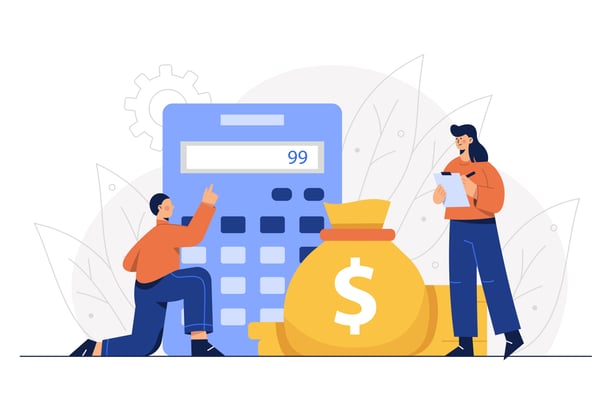
4. Calculate The Hours Required For MVP Development
To evaluate the MVP cost, you need to know how many hours to build the MVP. Usually, a basic MVP will require around 240-400 hours to develop. When calculated in months, it can take between two months and six months to build.
5. Multiply The Team’s Per Hour Cost With Hours Spend
The final step to calculate the cost of MVP development is to multiply the price per hour of the team with the number of hours required to build it. Now, you can analyze the overall cost of building the MVP.
Also, suppose you hire an in-house team to get your minimum viable product developed. In that case, it will include several additional costs like the infrastructure cost, development team, paid benefits, hardware/software costs, and much more.

Why Choose To Work With An MVP Development Partner?
Partnering with the reliable and trusted MVP development company assists the entire development team work collaboratively and ensure a faster product launch with a limited budget. Here we’ve come up with few advantages of hiring MVP Development Company:
1. You Will Get More Time To Focus On Core Areas
Your development team can now invest its crucial time in core areas by integrating with an MVP partner. They can focus more on boosting their business growth. Your MVP partner makes it easier and faster for you to succeed in this fast-running competitive business environment.
2. You Will Get More Real Business Insights
Before deciding when partnering with the MVP development company, it’s essential to consider how much expertise and industry experience the company owns. In that case, suppose.
You can get real business insights by hearing stories of successful startups that make millions today. It helps you move ahead in the industry. Their experiences help you understand better how to get a successful product launch.
3. You Will Get A Rich Pool Of Talent
MVP development is the one that provides you an opportunity to work with a team of talented and experienced professionals owning a diverse set of skills. The teams you possess excelling in ideation, design, UX, and product creation. This group of professionals boost your product growth and gets you through the faster development process.
4. You Will Get Excess Resources In Limited Funds
With MVP, you will get a chance to have excess resources using limited funds. It can happen only when you outsource your software development to an MVP development company. It will costs you much less as compared to hiring in-house teams—this ensures the product to be tested faster and too on a low budget.
Things To Consider Before Saying Yes To MVP Partner
Selecting an MVP partner is always a challenging and daunting task. If you pick the right one, it can take your business to the next level; on the other hand; your one wrong decision might come up with a significant loss.
Your MVP partner will add significant value to your business, so it’s essential to check on a few things before shaking hands with them.
1. Check If A Full-Fledged And Updated Website Exist
Try to join hands with the company that showcases its entire range of products, services, and other offerings through its website. The website should include full-fledged detailing of every product and service and also well updated. A famous outsourcing product development company listed on sites like (clutch and Good firms) is always honest and trustworthy about what it sells and takes pride in everything it does. The website should be impeccable in its design.
2. Scan Reviews and Testimonials Of Clients Thoroughly
It’s pretty challenging to found a company that is reliable and trustworthy both. Choose the best-trusted sources like reviews on sites like Glassdoor, check testimonials on google and the website itself. It appropriates right influences your decision.
It is going to tell you how much the company is reliable and dedicated to its commitments.
Moreover, you’ll gain real insights by seeing good reviews and testimonials also, how your working relationship could work in the future.
Read also: How To Choose The Perfect And Reliable MVP Partner In 2021?
3. Inspect Their Work Portfolio
The work portfolio of any development company itself describes everything on their behalf. Their team members, the approach they follow, work culture, commitment, and meeting deadlines. Check each of the company’s work profiles when filtering MVP companies and choose the best fit for your business.
Also, examine the previous companies’ portfolios. Do follow up with the ones they’ve worked with in the past. Also, contact their founders to get a brief idea of their experience.
4. Check if they are ready to sign an NDA
NDA(non-disclosure agreement) is the most critical document to agree on when partnering with some development company. It’s an agreement between the two parties to not disclose or share the company’s confidential information to anyone anywhere. They might face a legal battle if violated.
If the company is not showing an eagerness to sign an NDA, there might be a possibility that they may use or leak your information to your competitors or use them in another project.
 Big Brands Rocking The World With MVP Development
Big Brands Rocking The World With MVP Development
The main aim of both developers and businesses is to develop a master product that booms in the market for a longer time. They might need some motivation to achieve their goals. Moreover, they want to know all the pitfalls, problems, and challenges they might face during their development journey.

So, what’s better than reading the success stories of some million-dollar companies that enjoy the taste of success with MVP development in their initial years.
Dropbox
Dropbox is a popularly known file hosting service, released in June 2007. Drew Houston, the co-founder of Dropbox – introduced MVP when he has about 75 thousand fans worldwide.
Nowadays, it has over 600 million users.
When the idea of Dropbox was first introduced to the market, no software was released. Instead, Houston released an explanatory video, which showcased the possibilities and innovative functions of Dropbox.
And the miracle happens in just one night; the number of early adopters reached 75 thousand, according to TechCrunch.
The Dropbox team then realized that building an MVP has enormous potential. They introduced the product to the market and generated the first million active users in the first ten months. This is how Dropbox used the strategy of building an MVP to test its business hypothesis and learn about the actual market demands.
Read also: How Uber, Airbnb, And Spotify Used MVP To Become Startup Unicorns?
Groupon
Groupon is also a perfect example to show how a successful MVP turned into a million-dollar business. Andrew Mason, the founder of The Point, worked on The Point, a collective action platform, for 11 months until this project failed in 2008.
The Point was developed to help people save money when buying goods or services, and this is where Groupon originated. The founder then decided to launch a product MVP first.
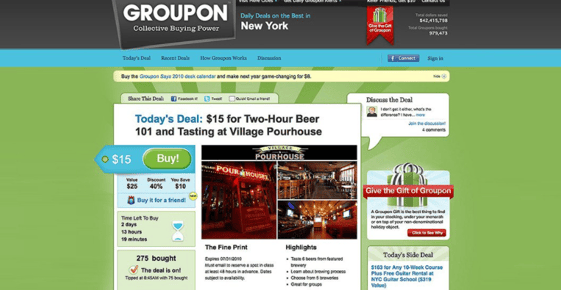
The Groupon MVP was first implemented as a WordPress blog. The idea here is to purchase coupons for a local pizza shop in Chicago. The requests are then handled manually via emails. It helped Mason save software development costs and test his idea without additional expenses. Because of his intelligent and quick decision, Groupon has soon turned into one of the most popular e-commerce marketplaces globally.
Twitter was initially named “Twittr,” which is introduced as an SMS communication channel between employees at Odeo – a podcasting platform. At the stage of MVP, Twitter featured no replies, hashtags, reposts, or direct messages, only SMS messages between the users.
According to a report by Business Insider, each Odeo employee spent hundreds of dollars on SMSs in Twttr. It was the ultimate proof of the viability of this platform.
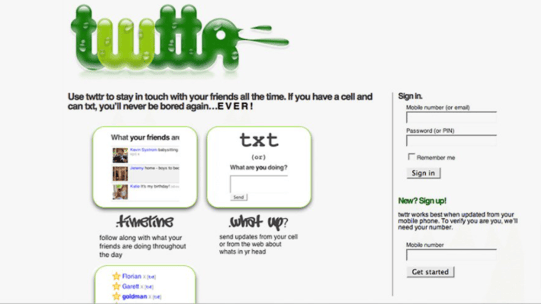
Twitter officially changed its name in 2007 and became a popular social networking platform. Today, the idea has evolved dramatically – Twitter is now one of the popular platforms known for news sources, celebrity rumors, and jokes.
Read also: 7 Inspiring Product Stories For Every Entrepreneur in 2021
An MVP was used to connect students of schools and colleges via messaging in the initial years of the Facebook launch.
Here the idea was just to connect friends through social media platforms and organize gatherings. The Facebook application was launched to test among users in its initial days, and it gathered lots of feedback.
According to the Independent, the initial name for Facebook was “Thefacebook.” It was designed as MVP that helped students from several American schools stay connected.
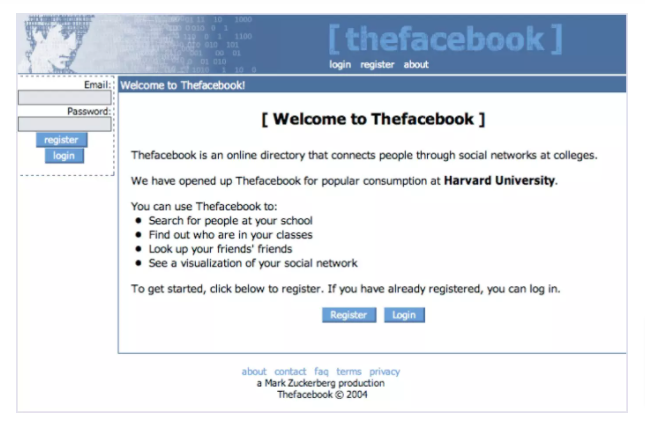
Today, the application is top-rated over the internet; it currently has more than 1.3 billion active users.
Simplicity and originality were the critical characteristics of Facebook in its initial days. Because of the benefits.
Key Takeaway
-
If you have an innovative app idea, going with the big bang approach of delivering a complete product should always be avoided. You must choose an iterative and incremental process that makes a significant change in your business.
-
Most successful startups were born out of a barebone MVP that offered the maximum value with the minimum fuzz.
-
Outsourced product development is also a success mantra many enterprises follow to reduce their development budget while approaching MVP.
-
A successful product roadmap would always start with an MVP. Entrepreneurs can offer the essential first and perfect the product as the users desire with time.
Concluding Lines
With so many successful stories heard about MVP development, starting with an MVP is the best way to go ahead with. It gives you unimaginable and never-ending profits.
Many business owners were confused about MVP development and choosing the right MVP development company to succeed.
Always remember that the MVP you develop need not be the best version; it needs to be the minimum version to delight and engage users.
If you have any product idea brewing in your mind, you can choose us as your MVP development partner to help you with MVP development. We have assisted many startups, enterprises, and product companies in developing a successful outcome- starting with an MVP.
You can even hire developers and an entire MVP development team depending on your project needs.




























.png)




